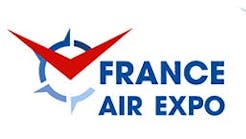“I want the individual responsible for this incident fired!” All too often I have heard this knee jerk response long before the facts are known and a rational evaluation of the situation can take place.
Mistakes happen, and in our industry, as we all know, some can have serious consequences. In this article I will address mistakes that involve damage to an aircraft and the impact that it has on the technician(s) involved.
Addressing the personnel involved in an incident is often difficult and emotional. Employees, genuinely distraught, fearful of losing their job must feel confident they will receive a fair review from management. Follow-on actions should consider such factors such as length of service, past performance, and any extenuating circumstances relevant to the incident.
Management assessment
Mistakes are a reality and will continue to occur as long as humans are involved in the process of maintaining and repairing aircraft. Managers must assess these mistakes from a multiple perspective. Facilities which maintain a high safety record have policies to initiate corrective action and learn from their mistakes.
There is an old adage that says “the only people who do not make mistakes are those who are not doing anything.” If we agree with that premise, then it is a certainty that technicians will make a mistake(s) during their career. There is very clear distinction between an honest mistake and willful misconduct, gross negligence and dishonestly. In the latter cases, individuals should be disciplined or terminated and if warranted reported to the appropriate legal authority.
Once a mistake of any consequence occurs, it quickly makes its way to the management level with the authority to resolve the problem. The mistake can be an internal issue that is handled as a “company matter” or, as is often the case, it becomes a “customer service” issue because a customer’s aircraft is affected.
Customer involvement
Customer service issues are potentially complex. It is critical to involve the customer in the corrective action process. If a customer’s aircraft is involved, notifying the customer immediately is the first course of action. Depending on the severity of the problem, it is helpful to have a corrective action plan established so you can tell the customer how you plan to remedy the problem. Recovery from a mistake can have a positive effect on the relationship between the service provider and the customer. Obviously, no one is happy when an incident occurs, however, the recovery process demonstrates the true metal of a service provider.
In my more than 30 years of experience, I can attest to the fact that customers will accept the most serious error provided the service center is truthful and acts in good faith to correct the problem. Some loyal long-term relationships have been borne out of a negative situation turned around by a positive response from the service center.
Mistakes happen
Let’s agree that mistakes are nothing more than the definition stated in the dictionary. They are not sinister plots hatched by employees to damage the customer’s aircraft or cost the company money. The vast majority of technicians arrive at work with the intention of doing their job to the best of their ability. No one decides on the drive to work that “they will foul things up today.” As absurd as that premise is, the treatment of employees after an incident would lead you to conclude that some managers and organizations subscribe to that theory.
My experience has been the technician who made an error feels worse than anyone else. Most technicians are harder on themselves because they feel they have failed not only their peers, but the customer, and the company. Self-assessment is the very fabric that maintains a high level of safety and integrity in the aviation industry.
Taking responsibility
A number of years ago as general manager of a service facility my secretary told me one of the employees in the paint shop would like to see me. I was not completely surprised because earlier in the day I learned that a Challenger windshield was damaged with a razor blade and would need to be replaced.
When the employee arrived at my office he was visibly upset and proceeded to explain that he damaged the windshield and wanted me to know it was his fault and he understood windshield replacement would be very costly. I am also certain that he was concerned about any disciplinary action that may be forthcoming.
I told him to take a seat and I had a few questions that needed to be addressed. First: “How long have you worked here and how many aircraft have you been involved in painting?” Answer: “I have been here 20 years and been directly involved in hundreds of painting projects both big and small and this is the first time anything like this has ever happened and I feel terrible.”
My response to him was, “Just to be clear, you have been here 20 years and painted hundreds of aircraft and this is the first mistake of any consequence for which you have been involved.” He responded that was correct.
Learn from mistakes
“Well, first let me commend you on your excellent work record and we will get another windshield on order and have it installed immediately. However, I would like you to help me and your fellow employees in the paint shop by investigating this incident and come up with recommendations on how we could avoid this type of mistake from occurring in the future.”
He was shocked to realize that he had transitioned from potential disciplinary action to leading the incident investigation team and developing a corrective action plan. This was a high quality employee who made a mistake albeit costly. A mistake greater than the damaged windshield would have been to berate the individual who had the integrity to come forward and felt bad for failing at his job.
Proper training and equipment
Even excellent employees make mistakes. Because there is no sure way to avoid mistakes, the best way to reduce them is to invest in professional and technical training and proper equipment. By providing these tools, most mistakes will have been avoided in the first place. More importantly there must be a culture in the workplace which encourages employees to come forward when a mistake occurs.
No matter how egregious a mistake is, the primary goal of management is to not only correct the mistake, but learn from the incident and educate those involved to avoid a future occurrence. An atmosphere of fear and retribution will encourage a mistake to go unreported with potentially fatal consequences.
Management must engender an environment where any employee who wakes up at 2:00 a.m. and cannot remember if he installed a cotter key rushes to the phone and calls the service facility and addresses the matter as quickly as possible. There should never be the thought that admitting a mistake or uncertainty about a maintenance task will lead to disciplinary action. I recommend all managers read Air Transport Association of America (ATA) Specification 113 titled Maintenance Human Factors Programs Guidelines which specifically addresses this topic.
Sometimes we find that individuals are truly in the wrong job and for whatever reason do not have the aptitude to perform the tasks assigned to them. Here, management must intervene and if possible place the individual in a job at which he will succeed. Honest mistakes happen, however, if we stay vigilant, maintain a high level of training, and look out for each other hopefully the mistakes we make will be of little consequence.
John Rahilly has more than 36 years of aviation service experience which is a combination of formal education, military service, and numerous leadership positions in the corporate and private jet marketplace. Rahilly understands the nuances of both the maintenance and aesthetic aspects of the business jet service industry. Based in North Carolina, he can be reached at johnrahilly@rahillyaviation.com.



